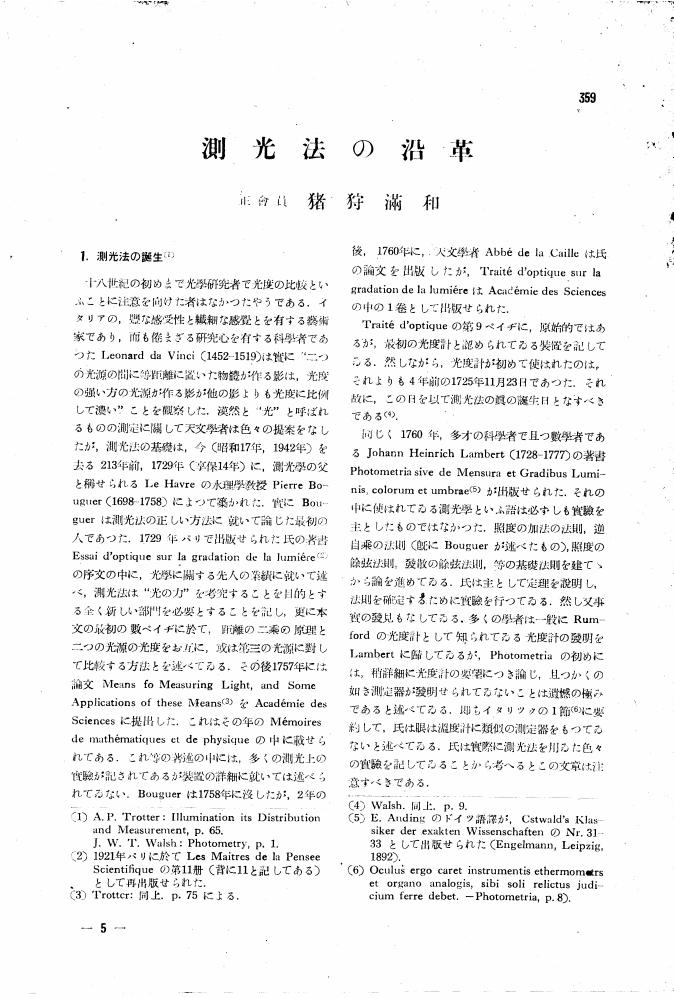2 0 0 0 OA 新たに解明された花色素アントシアニンの青色発色機構
- 著者
- 近藤 忠雄 上田 実 吉田 久美
- 出版者
- The Society of Synthetic Organic Chemistry, Japan
- 雑誌
- 有機合成化学協会誌 (ISSN:00379980)
- 巻号頁・発行日
- vol.54, no.1, pp.42-53, 1996-01-01 (Released:2009-11-16)
- 参考文献数
- 29
- 被引用文献数
- 1 4
Various flower colors are in great part due to anthocyanins. Recently, we have elucidated two new mechanisms for blue flower color development on blue cornflower and blue morning glory. The composition of protocyanin, a blue pigment from cornflower, Centaurea cyanus, was determined to consist of six molecules of succinylcyanins (Sucy), six molecules of malonylflavones (Mafl), one ferric ion and one magnesium ion, [Sucy6Mafl6Fe3+Mg2+]. The blue color of protocyanin was due to the LMCT (Ligand to Metal Charge Transfer) interaction between Sucy and Fe3+. The structure of protocyanin was examined by using Al, Mg-protocyanin. The gross structure is much similar to that of commelinin. The pigment of blue morning glory, Ipomoea tricolor, is an triacylated anthocyanin, HBA. We measured the vacuoler pH of the petal of morning glory by using a proton selective micro electrode. The pHv of the petal of purplish red bud was 6.6 and that of blue open flower petal was 7.7. The anhydrobase anion of HBA must be stabilized by intramolecular stacking. We could solve 80 year's problems, one is about cornflower's pigment and the other is the evidence of the pH theory. In both cases hydrophobic interaction followed by formation of supra-molecule is the key of stabilization of anthocyanidin chromophore.
1 0 0 0 OA 花の色はなぜ多彩で安定か アントシアニンの花色発現機構
- 著者
- 吉田 久美 近藤 忠雄
- 出版者
- 公益社団法人 日本農芸化学会
- 雑誌
- 化学と生物 (ISSN:0453073X)
- 巻号頁・発行日
- vol.33, no.2, pp.91-99, 1995-02-25 (Released:2009-05-25)
- 参考文献数
- 42
- 被引用文献数
- 2 1
1 0 0 0 OA 測光 (其1)(8月)
1 0 0 0 花弁の着色細胞中でのアントシアニンの分子会合と発色機構の研究
- 著者
- 森 美穂子 吉田 久美 近藤 忠雄
- 出版者
- 日本植物生理学会
- 雑誌
- 日本植物生理学会年会およびシンポジウム 講演要旨集
- 巻号頁・発行日
- vol.2004, pp.415, 2004
(目的)ほとんどの花色を担う色素のアントシアニンは、花弁の表層にある着色細胞の液胞に局在する。液胞内の色素濃度は10<SUP>-2</SUP> Mと非常に高く、様々な分子会合により安定化され、かつ色が変化する。我々は、花弁の着色液胞における<I>in vivo</I>花色発現解明に取り組んでおり、今回細胞内での色素の分子会合を明らかにする目的で、花弁および着色細胞の円二色性(CD)を測定し、<I>in vitro</I>の花色再現実験と比較した。<br>(結果)既に我々はネモフィラ(<I>Nemophila menziesii</I>)青色花弁色素がメタロアントシアニンのネモフィリンであることを、構成成分の単離と再合成実験により明らかにしている。Mg<SUP>2+</SUP>-Mg<SUP>2+</SUP>型錯体は紫色だがMg<SUP>2+</SUP>-Fe<SUP>3+</SUP>型錯体は青色を示し、それぞれ可視吸収スペクトルとCDが異なる。生花弁を測定すると乱反射によるノイズのため極大波長を正確に求められない。そこで、吸水させた花弁及びプロトプラスト懸濁液を用いて測定したところ、いずれもMg<SUP>2+</SUP>-Fe<SUP>3+</SUP>型とよい一致を示した。CDには特有の励起子型の負のコットンが認められ、色素同士のキラルな会合の存在がわかった。さらにアジサイ(<I>Hydrangea macrophylla</I>)など数種の花について測定を行ったので合わせて報告する。
1 0 0 0 OA 5-O-アシル化キナ酸類の効率的合成によるアジサイの 青色金属錯体色素の化学構造研究
- 著者
- 尾山 公一 山田 智美 伊藤 大輔 渡邉 紀之 関口 由紀子 鈴木 昌子 近藤 忠雄 吉田 久美
- 出版者
- 天然有機化合物討論会実行委員会
- 雑誌
- 天然有機化合物討論会講演要旨集 57 (ISSN:24331856)
- 巻号頁・発行日
- pp.PosterP61, 2015 (Released:2018-10-01)
【緒言】我々は、アジサイの花色変異の現象に興味を持ち研究を行っている。一細胞分析により、アントシアニンのdelphinidin 3-O-glucoside (1)が、助色素(5-O-caffeoylquinic acid (neochlorogenic acid (2))、5-O-p-coumaroylquinic acid (3)、3-O-caffeoylquinic acid (chlorogenic acid (4))の組成比、液胞pH、及びAl3+量の違いによって多彩に赤から紫、青に発色をすることを明らかにした (Figure 1) 1-3。アジサイの青色は、pH 4の条件下、1、2または3及びAl3+を混合すると再現できることがわかった4,5。この青色色素は、水溶液中だけで安定に形成される金属錯体で、ツユクサなどに見いだされた自己組織化超分子金属錯体色素(メタロアントシアニン)とは全く異なる性質を持つ非化学量論量の分子会合錯体である。これまで、結晶化の成功例はなく、1H NMRスペクトルもブロードで複雑なため、構造は今も不明である。本研究では、5-O-アシル化キナ酸類の効率的合成方法を新たに開発した。次に、合成した助色素を用いて青色色素を再構築し、解析可能なNMRスペクトルを得ることに成功した。【5-O-アシル化キナ酸類の効率的合成法の開拓】従来の2と3の合成4-6では、1位のカルボン酸の保護基にメチル基を用い、アシル基のフェノールの保護基にアセチル基を使用しているために、最終ステップの脱保護反応で競争的脱アシル化反応とアシル転移が起こり、収率が著しく低かった。また、5位へのエステル化は酸クロリドを用いていた。そこで、合成経路を見直し、1位のカルボン酸の保護基としてPMB基を持つキナ酸誘導体5を新たに分子設計して、Scheme 1に示すように(–)-キナ酸 (4) から5段階79%で合成した。5の5位アキシアルヒドロキシ基へのアシル化反応は、遊離カルボン酸にTsClとN-メチルイミダゾール (NMI)を加えてアシルアンモニウム中間体を生成させて、そこへアルコールを反応させる田辺法7を検討した。i-Pr2NEtの添加によりアルコールとカルボン酸の求核性が上がり収率が向上した(Scheme 2)。また、アンモニウム中間体の生成と同時にアルコール5が本中間体をトラップすることを目指してNMIを最後に加えた。その結果、収率はさらに向上した(Scheme 2)。この改良法を用いてp-クマル酸やコーヒー酸などの種々の遊離カルボン酸のエステル化反応を行い、72–94%の高収率で6-12を得た (Scheme 3)。得られたアシル体6-11の脱保護反応を検討した(Table 1)。芳香環部分に酸素原子のない6-9では、いずれも高収率(79-87%)で目的のアシル化キナ酸を得た。しかし、フェノール性ヒドロキシ基をMOM保護した10と11では、収率は40%以下と低かった。種々検討した結果、BCl3/C6HMe5を作用させると高収率(69,73%)で脱保護体が得られた 8。これらにより、市販のキナ酸(4)から7段階、通算収率45–60%で種々の5-O-アシル化キナ酸類の合成を達成した9,10。【アジサイ青色金属錯体色素の化学構造】合成した助色素類を用いて、アジサイ萼片の青色再現実験と得られた溶液の可視吸収スペクトル、円二色性、およびNMR分析を行った。これまでの知見により1-5、(View PDFfor the rest of the abstract.)
- 著者
- 伊藤 大輔 新海 陽介 三木 直子 加藤 友紀 近藤 忠雄 吉田 久美
- 出版者
- 天然有機化合物討論会実行委員会
- 雑誌
- 天然有機化合物討論会講演要旨集
- 巻号頁・発行日
- vol.49, pp.455-460, 2007
The sepals of Hydrangea macrophylla show various colors from red through purple to blue and famous for its easy color change. However, any colored sepals consisted of the same components; one anthocyanin, delphinidin 3-glucoside (1) and three co-pigments, 5-O-caffeoylquinic acid (neochlorogenic acid, 2), 5-O-p-coumaroylquinic acid (3) and 3-O-caffeoylquinic acid (chlorogenic acid, 4). For blue color development, Al^<3+> has been clarified to be essential and we obtained stable blue solution by mixing 1, 2 and Al^<3+>. However the mechanism of flower color variation and the chemical structure of the blue pigment are still obscure. To clarify the color variation of hydrangea, we established "Single Cell Analysis Method". After recording the absorption spectrum of a cell, the vacuolar pH of the cell was measured by using a microelectrode. By micro-HPLC technique, the composition of 1-4 and Al^<3+> was determined. Combining the results, we could reproduce the cell color from blue to red by mixing the components in various pH aq. solutions.
1 0 0 0 花弁細胞の液胞膜輸送と花色発現に関する研究
花色発現には種々さまざまな液胞膜輸送が重要な役割を果たしている。そこで、この観点から、花色の解明を目指した。1)アサガオの開花に伴う花色変化の機構と液胞膜輸送開花時に液胞pHが上昇するのは、表層の着色細胞だけであることから、花弁の短時間の酵素処理により着色プロトプラストだけを調製し、これから、着色細胞だけの液胞膜を単離した。これを用いて、pH制御に関わると推測される輸送タンパク質の解析を行った。開花に向けてV-ATPse、V-PPaseの活性が協奏的に上昇した。ナトリウムープロトン交換輸送体(NHX1)は、開花最終ステージで劇的に発現量が上昇し、活性が上がった。同時に、PM-ATPaseの発現量と活性も上昇することがわかった。以上より、これらプロトンポンプ類およびNHX1の働きが、花色の青色化(即ち液胞pH上昇)をもたらすことを明らかにした。さらに、開花にともないアサガオの花弁の表層細胞の体積は数倍に増加し、この現象と花色の青色化、およびK^+量の増加同調していることがわかった。即ち、アサガオ開花時の液胞膜上のプロトンポンプ、NHX1および細胞膜上のプロトンポンプの発現量の増加と活性上昇は、液胞内へK^+を輸送して細胞を伸長生長させるために必須の装置ではないかと考えられる。2)その他の花の花色発現機構アジサイ、ファセリア、チューリップなどの液胞内成分を明らかにし、青色発色機構の化学的な解明を行った。
1 0 0 0 小豆種皮および餡の小豆色の発現に関する食品化学的研究
目的赤小豆(Vigna angularis)は日本では文化的にも独特の位置を占める豆で、とくにその色が珍重されるが、未だに種皮色素の構造も、その加工食品である飽の色についても化学的な知見がほとんどない。本研究では、種皮色素の化学構造を明らかにすること、および、製餡加工工程において、種皮色素がどのように餡へと移行して餡の紫色が発色するのかを解明することを目的に行なった。方法および結果赤小豆種皮から色素を抽出して分析する条件の検討を行ない、トリフルオロ酢酸を含むアセトニトリル水溶液で抽出し、逆相HPLCで分析する手法を確立した。赤小豆種皮には、二種類のアントシアニンとは違う発色団を持つと推定される色素が含まれることを初めて見いだした。そこで、これらの色素の単離精製法を検討した。溶媒抽出後、アンバーライトXAD-7カラムクロマトグラフィー、次いでゲルろ過カラムクロマトグラフィーを行うことにより、かなり色素の純度の上った色素を微量であるが得た。同時に、ケルセチンを同定した。種皮色と餡色の違いを明らかにする目的で、製餡加工工程試料から成分を抽出して、HPLC分析を行なった。渋切り水には、色素はほとんど含まれず、無色のポリフェノール成分が多く溶出することがわかった。さらし餡に、種皮に含まれる2種の色素が存在することがわかり、同時に、餡では、無色のポリフェノール量い対する色素の含有量が増えていることがわかった。渋きり操作により、赤茶色系統の発色をするポリフェノール類が除去されることがわかった。

